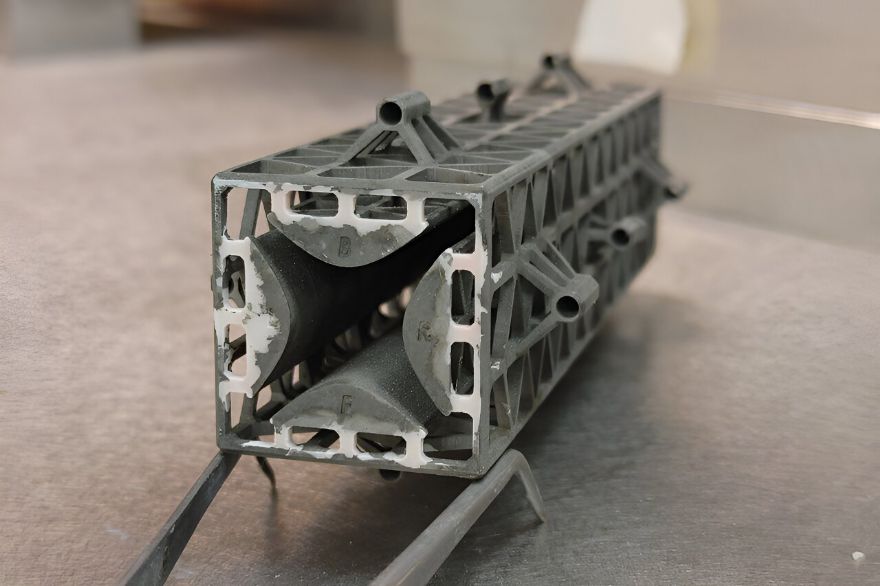
Mass spectrometers that identify chemical substances, are widely used in applications like crime scene analysis, toxicology testing, and geological surveying; they are also bulky, costly, and easy to damage, which limits where they can be effectively deployed. However, using additive manufacturing (AM),
Massachusetts Institute of Technology (MIT) researchers produced a mass filter — the core component of a mass spectrometer — that is far lighter and cheaper than the same type of filter made with traditional techniques and materials.
Indeed, the researchers say their ‘miniaturised filter’, known as a quadrupole, can be 3-D printed in a matter of hours and is as precise as some commercial-grade mass filters that can cost more than $100,000 and take weeks to manufacture. The filter is made using a durable and heat-resistant glass-ceramic resin (a relatively new printable material that can withstand temperatures up to 900°C and performs well in a vacuum); and because it is printed in one step, no assembly is required (assembly often introduces defects that can hamper the performance of quadrupoles).
Luis Fernando Velásquez-García, a principal research scientist in MIT’s Microsystems Technology Laboratories (MTL) and senior author of a paper detailing the miniaturised quadrupole, has been working for some 20 years on developing a 3-D printed, portable mass spectrometer. He said: “We are not the first ones to try to do this, but we are the first to succeed. There are other miniaturised quadrupole filters, but they are not comparable with professional-grade mass filters. There are a lot of possibilities for this hardware if the size and cost could be smaller without adversely affecting the performance.
“For instance, a scientist could bring a portable mass spectrometer to remote areas of a rainforest, using it to rapidly analyse potential pollutants without shipping samples back to a lab; and a lightweight device would be cheaper and easier to send into space, where it could monitor chemicals in Earth’s atmosphere or on those of distant planets.”
The team produced this device using vat photopolymerisation, which sees the model constructed layer by layer. An ultra-violet (UV) light is used to cure the resin where required, while a platform moves the object being made downwards after each new layer is cured.